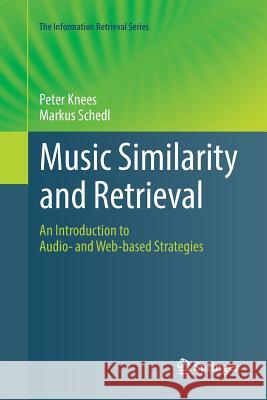Music Similarity and Retrieval: An Introduction to Audio- And Web-Based Strategies » książka
topmenu
Music Similarity and Retrieval: An Introduction to Audio- And Web-Based Strategies
ISBN-13: 9783662570319 / Angielski / Miękka / 2018 / 299 str.
Kategorie:
Kategorie BISAC:
Wydawca:
Springer
Seria wydawnicza:
Język:
Angielski
ISBN-13:
9783662570319
Rok wydania:
2018
Wydanie:
Softcover Repri
Ilość stron:
299
Waga:
0.45 kg
Wymiary:
23.39 x 15.6 x 1.7
Oprawa:
Miękka
Wolumenów:
01
Dodatkowe informacje:
Wydanie ilustrowane











